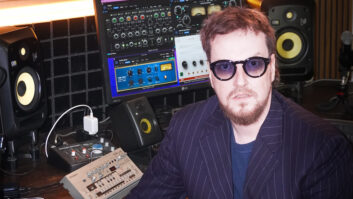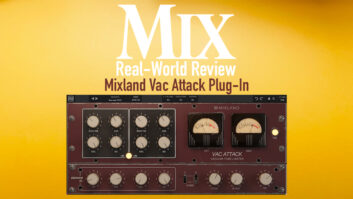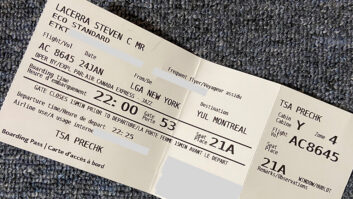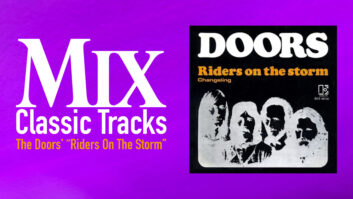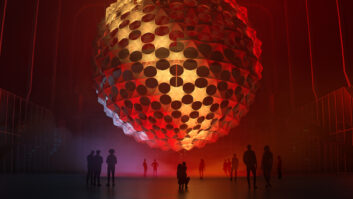Rock fans all over the world know Randy Bachman as a founding member and lead guitarist of The Guess Who in the ’60s, and Bachman Turner Overdrive (BTO) in the ’70s. Bachman’s many musical contributions have gracefully withstood the test of time—songs like “These Eyes,” “American Woman,” and “Let It Ride” have had multigenerational appeal, earning his work a permanent place in rock music collections around the world.
Randy Bachman (left) and Fred Turner Recently, Bachman—a guitarist with an unmistakable bluesy feel—reunited with his old friend and bassist, Fred Turner, who possessed BTO’s 10-ton, gravelly voice. Almost instantly, the two picked up where they left off and, once again, began rollin’ on down the highway. We spoke with Bachman about the road ahead.

On Reconnecting :
I started work on an album and thought for fun that I would send a track to Fred Turner. The track was perfect for him, and it was called, “Rock and Roll Is the Only Way Out.” He sang on it, sent it back to me and it was amazing—my playing, my songwriting and his voice, just like the ’70s. I called him back and asked him if he would sing on a few more tracks. I wanted to pursue a Bachman and Turner album.
We all flew to Winnipeg with the whole band; we thought that would be a good comfort zone since it is Fred’s home turf. I had been playing in front of crowds the whole time, but Fred hadn’t been playing for about four years. We thought we’d premiere the set in a small club in Winnipeg in front of family and friends. So we set up in a room and tried the song, “Let It Ride.” Suddenly, when the lead vocals came in, we all burst into a smile and knew we didn’t need to practice anymore—the cement-truck voice was there.
We soon played in front of 38,000 people at Sweden Rock, who went crazy over us, and we were stunned. Then we played the High Voltage Festival in London for 28,000 people, and it was the same thing. The fans knew all the songs; we were just amazed! We had people like Jimmy Page coming up to us backstage asking if were going to play “Not Fragile.”
On Assembling the Pieces :
The album was all done piecemeal in my own personal studio in Salt Spring Island near Victoria, Canada, which is situated in a rammed earth barn where the walls are about 3 feet thick; it is an incredible-sounding room. This means there are no vibrations or building shakes. It’s like being in a fortress or like doing the drums in a cave.
Basically, I wanted to go back to my roots, which was 1968 and ’69 Zeppelin, Cream and Hendrix—bluesy rock-oriented kinds of things, with great, solid drums. I wanted there to be 12-bar blues, all enhanced with different kinds of grooves.
On His Barn Studio:
The front half of the hayloft is the control room, and the other half has got amps and guitars and an iso booth. The whole main floor is empty, so we can put drums, keyboards, synths and bass amps wherever we want. Then there is a big round bathroom in there, where we put our amps. This serves as a big reverb tank; it’s all concrete, round and probably 15 feet across.
My studio is full of gear from the ’70s; original LA2A compressors, original UREI 1176s, a whole bunch of old Sennheiser and Neumann mics and lots of other things that I’ve collected over the years. I used to go to pawn shops and buy microphones as studio decorations—a lot of them are great examples of art deco and chrome, because I love chrome. Suddenly, you get these things fixed, and you get a sound like Elvis had in 1954 with “Hound Dog.” You can’t get that from anything else. It’s got to be that certain ribbon mic that distorts when you yell into it. A lot of the sound that Elvis and Little Richard projected was the two of them just wrecking these ribbon mics they were screaming into.
On His Classic Guitar Sound :
I change guitar sounds on every single track on this album. When I want something tight, and I know what it is, it is basically a Les Paul or a Strat. I’ve got another guitar—a Harmony Rocket—which is what Dave Davies played on “You Really Got Me.” I used this for a lot of the solos on the album. One of my favorite amps is a little Supro amp, which Jimmy Page used on Zeppelin I. It is basically 12 watts. The trick is that you lay it on its back so the speaker is aiming up. You put a mic about 10 feet above it and overdrive it with a pedal, like a little Roland Blues Driver, to give the amp a little more boost. Because it’s lying on its back, it’s almost like a closed cabinet.
On the Sweetness of Analog:
There is something about the compression of tape that you just can’t get in digital. I’m an analog guy from way back, so I use the digital now and make it sound like analog. I have all kinds of tricks and ways that I do that. I run my stuff through old cassette players, old Revoxes, Roland Space Echos. I see the advantages of cutting and pasting in the DAW, but I really miss the sound of tape. The DAW has made songwriting and editing easier, though. I remember having a guy sitting with a razor blade, cutting a tape that you spent weeks and weeks recording! That was a little unsettling.
Jeff Touzeau is a regular contributor to Pro Sound News, and author of the recent title, Sound Ideas for a Sound Planet: The Green Musicians Guide (Cengage).

